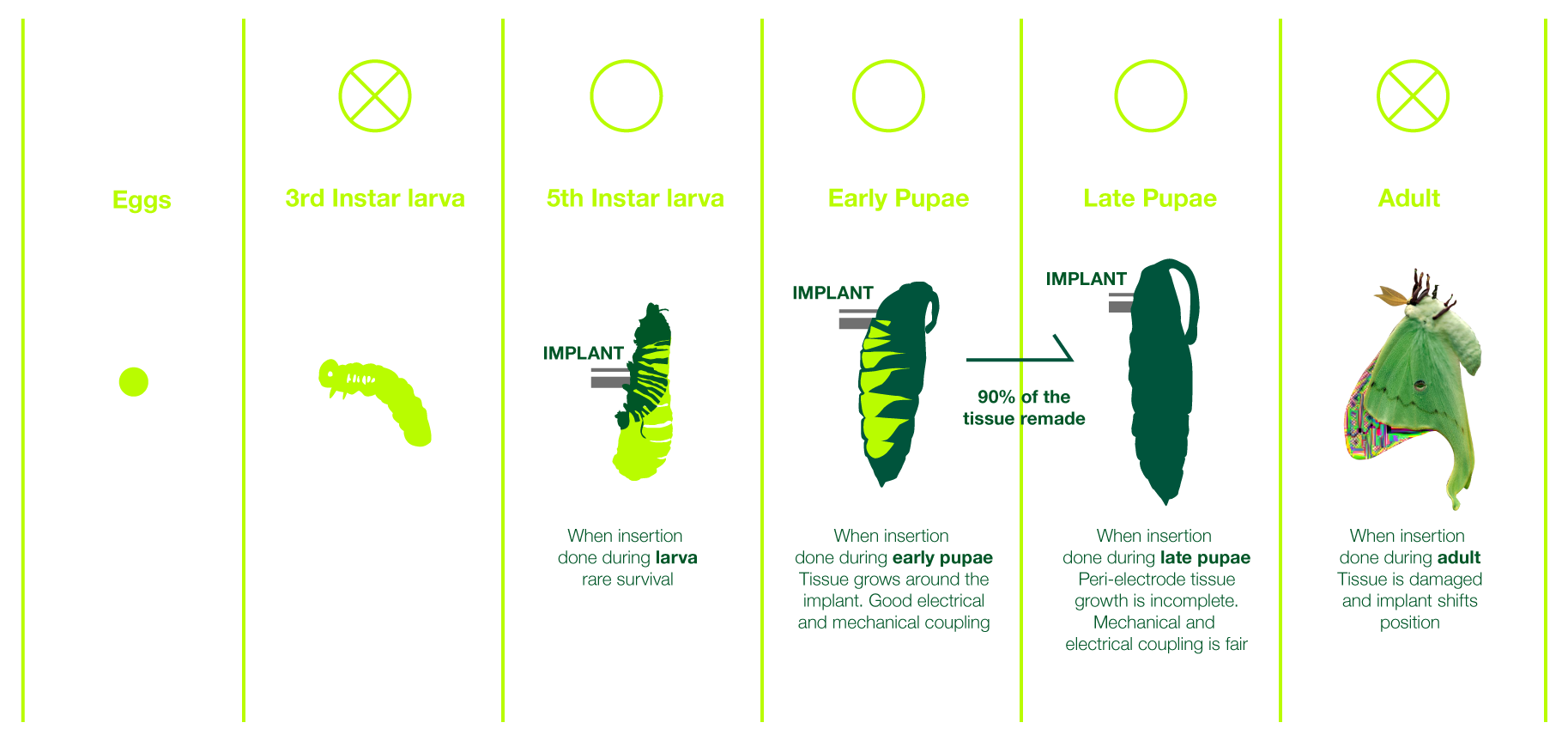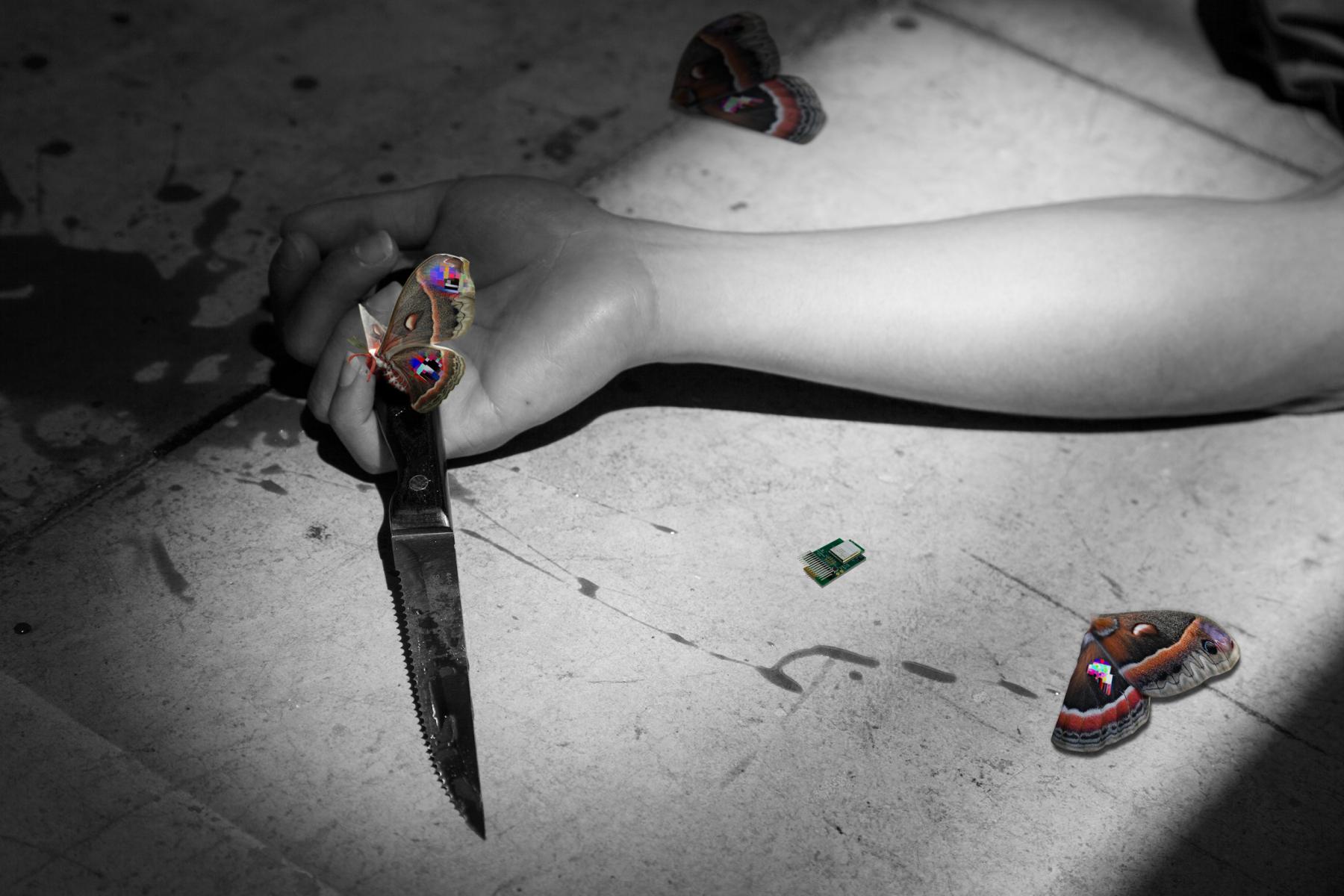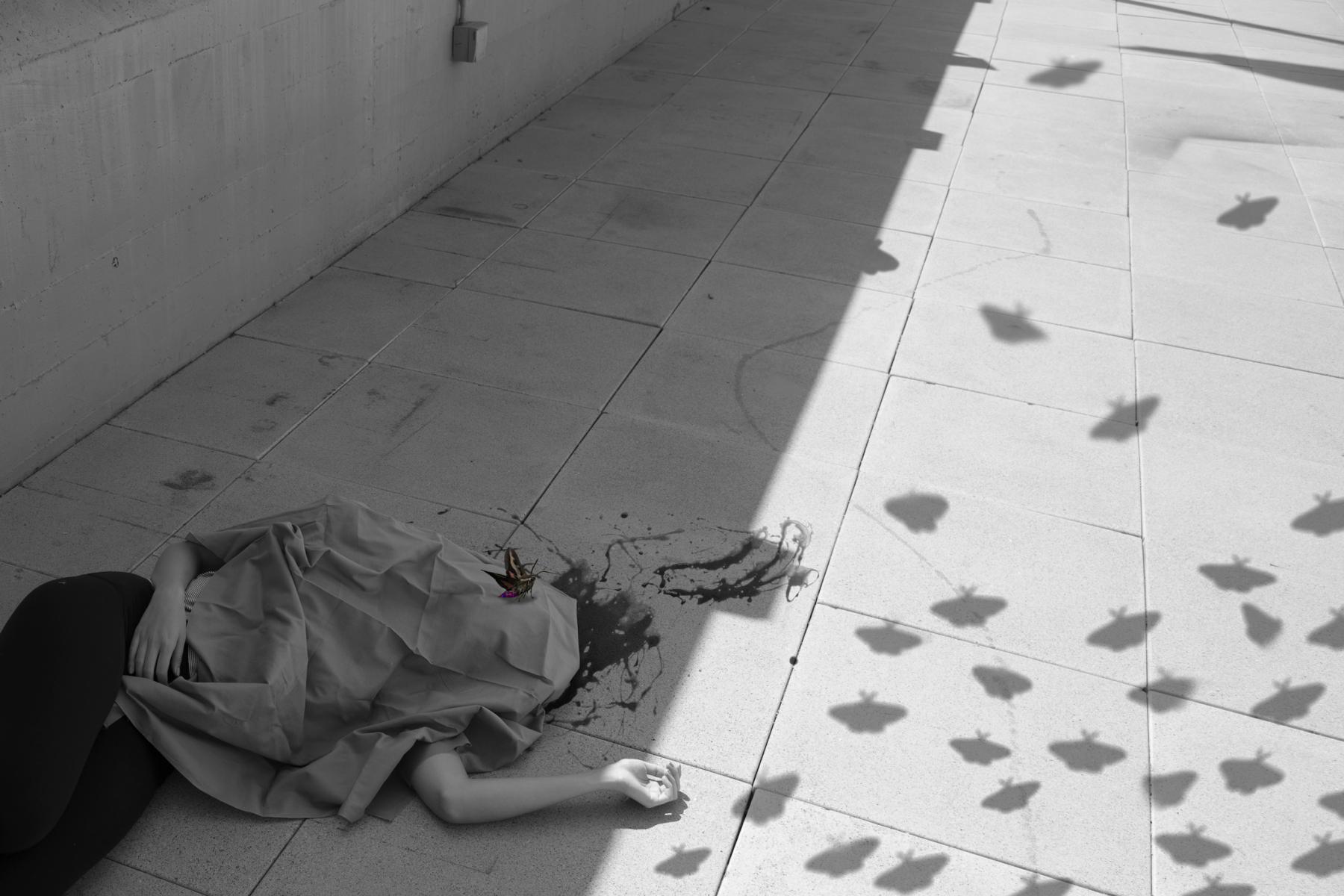Insectile Indices
Predpol, HunchLab, and ComStat are different types of relatively new crime prediction software that demonstrate how algorithms and other technologies can be used in urban infrastructures to predict crime. However, using these technologies and algorithms to collect data to predict crime, which is invariably subject to and tainted by human perception and use, can lead to a number of adverse ethical consequences, such as the amplification of existing biases against certain types of individuals based on race, gender or other interlocking categories of experience. When researchers in the US examined how PredPol predicts crime, they found that the software merely sparks a ‘feedback loop’ that leads to officers being repeatedly sent to certain neighbourhoods – typically ones with a high number of racial minorities – regardless of the true crime rate in that area. “The PredPol system was learning from reports recorded by the police – which may be higher in areas where there are more police – rather than from underlying crime rates.”1Danielle Ensign, Sorelle A. Friedler, Scott Neville, Carlos Scheidegger and Suresh Venkatasubramanian, “Runaway Feedback Loops in Predictive Policing”, arXiv preprint, 2017, p. 2. Available at: https://arxiv.org/abs/1706.09847 [accessed November 7, 2019].
On the other hand, if the crime data can be gathered by some artificial intelligence (AI) – thereby removing the individual human component from such data collection – would the resulting crime prediction be more efficient and accurate? Swarm Intelligence is one of the studies to explore this question. It is a branch of AI that mimics highly efficient behaviour of colony insects such as honeybees and ants. It shows a remarkable ability to correct errors during spatial and navigational problems, which can happen through a process called Stigmergy. Stigmergy is a mechanism of ‘indirect coordination’ when a minor change in the behaviour of one group member causes the other members to behave differently, leading to a new pattern of behaviour.2Cp. Francis Heylighen, “Stigmergy as a Universal Coordination Mechanism I: Definition and Components”, Cognitive Systems Research, 38, 2016, pp. 4–13. Available at: https://www.sciencedirect.com/science/article/pii/S1389041715000327?via%3Dihub [accessed November 7, 2019]. When one robotic agent malfunctions during a given mission, neighbouring agents can leverage another set of algorithms that corrects errors and variations. This allows continuing to work on the task at hand, constantly updating the feedback loop. Thereby, the central intelligence to orchestrate agents’ behaviour can ceaselessly correct established bias about certain space. “Swarm intelligence enables us to use an instantaneous infrastructure of decision-making to our advantage with the help of ever more dynamic forms of interconnectedness.”3Sebastian Vehlken, “Zootechnologies: Swarming as a Cultural Technique”, Theory, Culture and Society, 30 (6), 2013, pp. 110–131, here: p. 112.
Insectile Indices is a speculative design project that considers how electronically augmented insects could be trained to act as sophisticated data sensors, working in groups, as part of a neighbourhood crime predictive policing initiative in the city of Los Angeles, 2027. Rather than building upon the narrative of the potential sinister militaristic use of such technology, this project imagines an aesthetically pleasing utopia where insect-cyborgs have social utility and work towards the greater good of humanity. Insectile Indices also plays with the idea of aesthetics in our future tech-driven world by addressing whether we are more apt to silently ‘turn the other cheek’ to more pervasive surveillance if these insect-cyborgs become more aesthetically pleasing to the eye.
This project started during my MFA studio class called “Internet of Enlightened Things” in 2017 at Art Center College of Design. The aim was to investigate “new potential impact of Artificial intelligence in neighborhood and human scale environment”4B. Hooker, “Lab Studio: Internet of Enlightened Things”, lecture notes, ArtCenter College of Design, 2017.. My project consisted of short speculative fiction and immersive installation to describe a possible future for Los Angeles. Further, it was shown to my classmates and guest lecturers to receive and share their collective insight about a pervasive AI system embedded in the urban ecologies of California.
Background
In 2007, DARPA asked American scientists to submit proposals to develop insect-cyborgs, intending to develop micro air vehicles (MAV) – ultra-small flying robots capable of performing monitoring in dangerous territories. To this end, Cornell University researchers successfully implanted electronic circuit probes into tobacco hornworms as early as in the pupae growth stage. Specifically, the hornworms passed through the chrysalis stage to mature into moths whose muscles can be controlled by the implanted electronics.5Cp. A. Bozkurt, R. Gilmour, D. Stern, and A. Lal, “MEMS Based Bioelectronic Neuromuscular Interfaces for Insect Cyborg Flight Control”, Proceedings of the IEEE International Conference on Micro Electro Mechanical Systems (MEMS), 2008, pp. 160–164. Cornell’s researchers used various insect species such as dragonflies, beetles, cockroaches, and crickets for creating the cybernetic organism. The lifespan of the resulting “cybug” also increased through converting heat and mechanical energy that the insects naturally generated into electrical output.6Cp. Ethem Erkan Aktakka, Hanseup Kim, Massood Atashbar and Khalil Najafi, “Mechanical Energy Scavenging from Flying Insects MI”, Solid-State Sensors, Actuators, and Microsystems Workshop, South Carolina, USA, June 1–5, 2008.
Twenty years after this research, in 2027, this technology has trickled down into everyday life in the city of Los Angeles. Cybug farms are prevalent in the suburbs of Los Angeles and produce up to 70 million Cybugs a year. Civic AI manages the quality control of these Cybug breeds – for example, ensuring caterpillars suitable for surveillance and supporting the successful metamorphosis of these insects into healthy Cybugs. Full-grown moth Cybugs are freshly stored at specially designed vehicles in low temperatures and are safely transported to the Cybug Hotel in Los Angeles, where the Cybug swarm surveillance missions are planned and operated.
In previous years, predictive policing algorithms intentionally omitted certain data points to eliminate existing ethical biases. However, AI alone could not entirely avoid learning the human biases generated from the data. Some researchers believed that Cybug swarm could prevent this through an automated error correction mechanism. The Cybugs replace initial police inspections through their biological sensors to gather crime data and transmit it to the Cybug Hotel system. And, the ‘Hotel’ makes the core decisions on behalf of the human police – where and when to deploy more Cybugs to improve predictive algorithms, when to bring in human officers for missions that cannot be accomplished by artificial agents, and how to control the navigation of all those agents to the crime scenes finding the most efficient route. Therefore, Cybugs and the police department accomplish their objectives through symbiotic autonomy to substitute the unnecessary labour of police inspection.
Speculative Scenario: Los Angeles, 2027
Nowadays, thousands of ‘unfiltered’ photos of Cybug swarms are posted on Instagram pages by tourists visiting LA, with or without knowing that those small insects are not just naïvely beautiful local symbols of the region, but also the ‘real’ micro aerial vehicles which record every action of its public citizens. Initially, research on MAV’s was limited to robots created to imitate insect behaviour, but the technology was further developed to manipulate the bodies of insects for surveillance in the city. There are numerous reasons to use insects to monitor the city, namely the insects’ high sensitivity to chemical components, their ability to swarm in high numbers, as well as the ease in which their DNA can be modified and programmed. Scientists in this field believe that insects contain a wealth of evolutionary experience in solving problems of both artificial and natural ecosystems. It is also more sustainable to grow insect bodies for mass production, rather than producing robot armies that require special materials.
Cybug Hotel
The Cybug Hotel is the central AI system that manages Los Angeles’s policing infrastructure. It analyses data foraged by the Cybugs and controls their movements. All the information gathered is stored as memory by the Cybug Hotel. The Hotel then leverages this information to operate urban infrastructures such as streetlights and transportation.
Consequently, every system in the city is the result of interconnected actions of the insect cyborg. The Cybug Hotel system analyses data such as city patterns and determines the optimal route and method for the Cybugs to investigate neighbourhoods in the same way that an ant finds food via pheromones and attracting other ants to create a superhighway over time. The interaction between different moth Cybugs and the Cybug Hotel is based on electrical signals uploaded into the cloud enabling them to react rapidly to the influx of data. The Cybugs rotate back to the Hotel every four to six hours to recharge their energy and to report data to the AI system.
Jobs
The Cybug infrastructure has also created numerous jobs, such as the Cybug gardener, analyst, and collector. The gardeners are specialised to breed the insect body and inspect the biological process of the growth so that every insect meets the Cybug standards for deployment in the city. Cybug analysts keep track of the evolution of the species and limit the interaction between wild and genetically modified Cybugs. More importantly, they tag the data aggregated by the Cybug Hotel. Finally, the Cybug collectors are responsible for tracking the evolutionary processes of the Cybugs, gathering dead Cybugs and recycling the remains.
The Species
There are three different electronically augmented moth species that are designed by the system and located at the Cybug Hotel in California: the Hyalophora Cecropia moth, the Antheraea Polyphemus moth, and the Lunar moth.
The Hyalophora Cecropia moth, which is a blue-coloured moth, gathers audio from the Los Angeles urban landscape, secretly listening or recording people’s voices or mechanical sounds that suggest problems occurring in Los Angeles. The species has been used for foraging sound data to detect suspicious dialogue in elevators, alleys, homes, and other intimate urban spaces. While this moth used to be found as far west as the Rocky Mountains and as far north as many Canadian provinces on maple trees, it is now only produced on Cybug farms for human surveillance purposes and therefore challenging to find in the wild.
Antheraea Polyphemus, the red moth species, is used to take photographs and track movements of everyday life – much like a CCTV camera. However, the Cybug is more effective compared to a CCTV in this regard as it camouflages in the city landscape. This type of moth was widespread in continental North America, with local populations found throughout subarctic Canada and the United States. Like the Hyalophora Cecropia moth, it is now primarily produced in Cybug farms.
Finally, the Lunar moth detects suspicious odours. This moth is commonly used for investigating chemical compounds such as explosives, drugs, and weapons, rather than for its historical and evolutionary function of detecting pheromones and other attractants in flowers. Lunar moths are also known for their ability to swarm when needed effectively and, as such, can productively perceive suspicious chemical odours to help people quickly notice danger and escape.
Most mature moths in wildlife live around one to two weeks, but the genetically modified Cybugs can live up to several months with proper electrical energies controlling the body. When the Cybug’s body is destroyed by unexpected accidents or vandalism, microprobes that were initially inserted in the body are then recycled upon death for future use at the Cybug farm.
Swarm Behavior
Cybugs swarm based on received data to inform of dangers and prevent crimes. There are three commonly known Cybug group swarm behaviours – trap building, flocking, and synchronisation, all of which are learned from the evolutionary group patterns of other wild insects and animals.
Trap building behaviour is derived from the Amazonian ant species Allomerus Decemarticulatus. The trap resembles a honeycomb but works like a web. After building the honeycomb-like structure, the Cybug secretly waits for a suspicious individual and then traps them by swarming, which replaces the traditional police search. Flocking behaviour emulates bird migration patterns, which improves the Cybug’s efficiency in flying from one spot to another. Finally, synchronisation behaviour, which is derived from the fireflies’ bioluminescence during mating season, allows the Cybugs to be released into the urban infrastructure with the necessary synchronised data from the Cybug Hotel to complete its mission and achieve its objectives. Ironically, swarm behaviour is considered ‘naturally’ beautiful, making spectators catch these moments through video and photo for social media entertainment.
Conclusion
The role of the Cybug Hotel, in conjunction with that of the Cybugs, is to efficiently make decisions for policing the city without human bias, which is determined by social structure, religious beliefs, and political environments and cannot avoid subjective judgement of what is right or wrong. However, this speculative scenario implies AI as part of ‘nature’, which evolves with wild and artificial factors. Even though the idea of ‘nature’ and ‘ethics’ inherently conflict with one another, the Cybug, as part of a ‘natural’ ecosystem, attempts to reconcile this conflict by making myriads of ordinary ethical decisions instead of human ones.
Cybug Hotel metaphorically represents a ‘hotel’, which is a sterile and universalised space meant for tourism in modern society. The AI system remains as a mystical place that symbolises the ethical identity of a neighbourhood, exhibited as a government’s political product to serve the public. Further, the idea of tourism doesn’t come from the ontological question “what this insect is,” but instead from the functional question “what does the Cybug do for the public”? AI manipulates the instinct of wild insects for crime prevention and for public utility, rather than leaving it to its historical and natural function of pollinating flowers or evolutionary proliferation. This denies insects their role within wild nature for another form of nature – namely, an artificial nature ecosystem for the sake of the society. Borrowing from Donna Haraway’s description about the cyborg, “The cyborg does not dream of community on the model of the organic family. The cyborg would not recognize the Garden of Eden; it is not made of mud and cannot dream of returning to dust.”7Donna Haraway, “A Cyborg Manifesto: Science, Technology, and Socialist-Feminism in the Late Twentieth Century”, in: Simians, Cyborg and Women: The Reinvention of Nature, New York, Routledge, 1991, pp. 149–181. Cybug Hotel analyses the data from residents’ faces, gestures, odours, and voices, which help construct a “seamless transition” between AI and humans and has the effect of making technology invisible in urban nature. Further, it is this idea of ‘seamlessness’ that connects with the fusion of man, AI, and the Cybug.
| ↑1 | Danielle Ensign, Sorelle A. Friedler, Scott Neville, Carlos Scheidegger and Suresh Venkatasubramanian, “Runaway Feedback Loops in Predictive Policing”, arXiv preprint, 2017, p. 2. Available at: https://arxiv.org/abs/1706.09847 [accessed November 7, 2019]. |
|---|---|
| ↑2 | Cp. Francis Heylighen, “Stigmergy as a Universal Coordination Mechanism I: Definition and Components”, Cognitive Systems Research, 38, 2016, pp. 4–13. Available at: https://www.sciencedirect.com/science/article/pii/S1389041715000327?via%3Dihub [accessed November 7, 2019]. |
| ↑3 | Sebastian Vehlken, “Zootechnologies: Swarming as a Cultural Technique”, Theory, Culture and Society, 30 (6), 2013, pp. 110–131, here: p. 112. |
| ↑4 | B. Hooker, “Lab Studio: Internet of Enlightened Things”, lecture notes, ArtCenter College of Design, 2017. |
| ↑5 | Cp. A. Bozkurt, R. Gilmour, D. Stern, and A. Lal, “MEMS Based Bioelectronic Neuromuscular Interfaces for Insect Cyborg Flight Control”, Proceedings of the IEEE International Conference on Micro Electro Mechanical Systems (MEMS), 2008, pp. 160–164. |
| ↑6 | Cp. Ethem Erkan Aktakka, Hanseup Kim, Massood Atashbar and Khalil Najafi, “Mechanical Energy Scavenging from Flying Insects MI”, Solid-State Sensors, Actuators, and Microsystems Workshop, South Carolina, USA, June 1–5, 2008. |
| ↑7 | Donna Haraway, “A Cyborg Manifesto: Science, Technology, and Socialist-Feminism in the Late Twentieth Century”, in: Simians, Cyborg and Women: The Reinvention of Nature, New York, Routledge, 1991, pp. 149–181. |
Yeawon Kim is an artist, designer, and storyteller who creates patterns of visual data, as a way to make connections between natural and virtual ecologies. As a trans-national female, she is originally from South Korea and currently resides in Silicon Valley, and became interested in the gestures of cultural sentiments by observing how one’s transient realities are transformed within one’s digital and physical environment. Her realities’ are often revealed through speculative storytelling, graphic design, and immersive installation. She wrote her Master’s thesis on ‘Unresolved Ironies: 한(Han),’ and received her MFA from ArtCenter College of Design in Pasadena, CA. She is currently working as a product designer at the Uber Advanced Technology Group, envisioning self-driving vehicle experience in a possible future.




